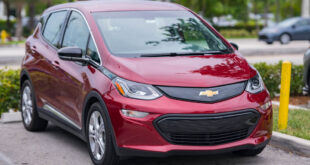Fast-Charging Electric Car Networks: Sustainable Transportation Electric vehicles (EVs) have rapidly gained traction as a cleaner, more sustainable alternative to traditional gasoline-powered cars. However, one of the significant barriers to widespread EV adoption is charging convenience. Fast-charging electric car networks are emerging as a game-changer, bridging the gap between EV practicality and consumer expectations.
In this article, we delve into the world of fast-charging networks, exploring their benefits, leading providers, technological advancements, and their role in shaping the future of sustainable transportation.
What Are Fast-Charging Electric Car Networks?
Fast-charging electric car networks are infrastructure systems designed to provide rapid power delivery to EVs, significantly reducing the time required for a full charge. Unlike standard chargers, which may take hours, fast chargers can restore an EV battery to 80% capacity in as little as 20-30 minutes, depending on the model and charger type.
These networks typically consist of strategically placed charging stations along highways, urban centers, and popular travel routes. By enabling faster, more accessible charging, they address one of the most critical concerns of EV owners—range anxiety.
Benefits of Fast-Charging Networks for EV Users
- Convenience: Shorter charging times make road trips and daily commutes hassle-free.
- Reduced Range Anxiety: Drivers can travel longer distances without worrying about running out of power.
- Encouragement of EV Adoption: Accessible charging infrastructure makes EV ownership more appealing.
- Environmental Impact: By supporting EV usage, these networks help reduce greenhouse gas emissions.
- Economic Growth: The development of charging infrastructure creates jobs and supports green technology industries.
Key Players in the Fast-Charging Network Market
- Tesla Supercharger: Tesla’s proprietary network offers fast and seamless charging for Tesla owners, with over 40,000 global stations.
- Electrify America: Open to various EV brands, it boasts ultra-fast chargers and user-friendly payment options.
- ChargePoint: Known for its extensive network and innovative charging solutions, ChargePoint supports residential and commercial users.
- IONITY: A joint venture by major automakers, IONITY focuses on fast chargers across Europe.
- EVgo: Offering reliable and sustainable fast-charging solutions, EVgo powers EVs with 100% renewable energy.
How Fast-Charging Networks Work
Fast chargers typically utilize Direct Current (DC) instead of Alternating Current (AC) for faster energy transfer. There are three main types of fast chargers:
- Level 3 Chargers: Deliver speeds of 50 kW, ideal for urban areas and small battery EVs.
- Ultra-Fast Chargers: Capable of delivering 150-350 kW, suitable for long-range EVs.
- High-Power Chargers: Deliver speeds above 350 kW, reducing charging time to under 15 minutes for compatible vehicles.
Challenges Facing Fast-Charging Networks
- High Costs: Installation and maintenance of fast chargers are expensive.
- Grid Dependency: Increased electricity demand strains local power grids.
- Compatibility Issues: Not all EVs support ultra-fast charging speeds.
- Location Scarcity: Rural and underdeveloped regions often lack charging infrastructure.
Future Trends in Fast-Charging Networks
- Wireless Charging: Promising a cable-free future for EVs.
- Solar-Powered Stations: Enhancing sustainability by using renewable energy.
- AI-Driven Optimization: Improving charging efficiency and reducing downtime.
- Integration with Smart Grids: Balancing demand and supply more effectively.
- Expansion into Emerging Markets: Addressing infrastructure gaps globally.
10 Tips for Using Fast-Charging Networks
- Plan your route to include reliable charging stations.
- Use charging apps to locate available stations nearby.
- Avoid overcharging to extend battery life.
- Utilize off-peak hours to minimize wait times.
- Monitor your EV’s compatibility with specific charger types.
- Check for network-specific memberships for discounts.
- Keep a backup charging cable for emergencies.
- Stay updated on software updates for your EV.
- Park considerately to allow others access to chargers.
- Regularly maintain your EV battery for optimal charging performance.
10 FAQs About Fast-Charging Electric Car Networks
- What is a fast-charging electric car network?
A system of chargers enabling rapid EV battery recharges, typically within 20-30 minutes. - How much does fast charging cost?
Costs vary by network and location, typically ranging from $0.20 to $0.60 per kWh. - Are fast chargers compatible with all EVs?
Most are, but charging speeds depend on the EV’s specifications. - How do I find fast-charging stations?
Use apps like PlugShare, ChargePoint, or the Tesla app for real-time locations. - Can I charge my EV at home with a fast charger?
Home fast chargers are available but are generally less powerful than public ones. - What’s the difference between Level 2 and Level 3 chargers?
Level 2 chargers are slower and more common, while Level 3 delivers rapid DC charging. - How sustainable are fast-charging networks?
Many are transitioning to renewable energy sources to reduce environmental impact. - Do fast chargers damage EV batteries?
Frequent fast charging can slightly reduce battery lifespan, but it’s negligible for most users. - Are there government incentives for fast-charging networks?
Many countries offer subsidies and tax breaks to support charging infrastructure. - What’s the future of fast-charging technology?
Expect advancements like wireless charging, ultra-fast speeds, and AI integration.
Conclusion
Fast-charging electric car networks are pivotal in accelerating the global transition to electric mobility. By providing rapid, convenient, and widespread charging solutions, these networks make EVs a practical choice for everyday use and long-distance travel.
The continued evolution of fast-charging technology, combined with expanding infrastructure and government support, promises a future where range anxiety becomes a thing of the past. As these networks grow and innovate, they will play an indispensable role in achieving a sustainable and electrified transportation ecosystem.
 oto car insurance used car repair
oto car insurance used car repair
